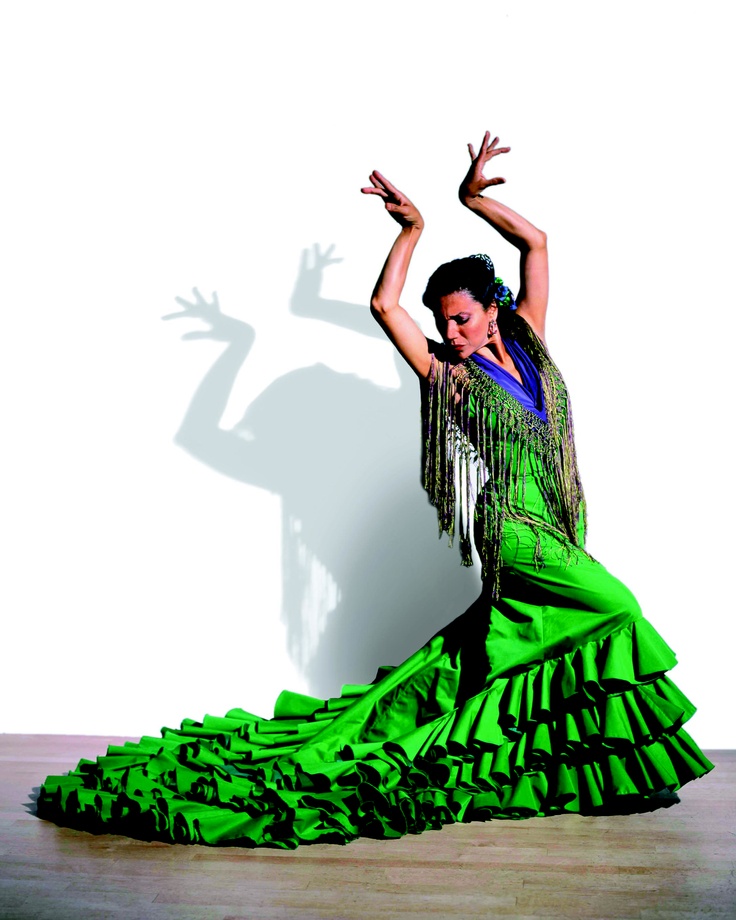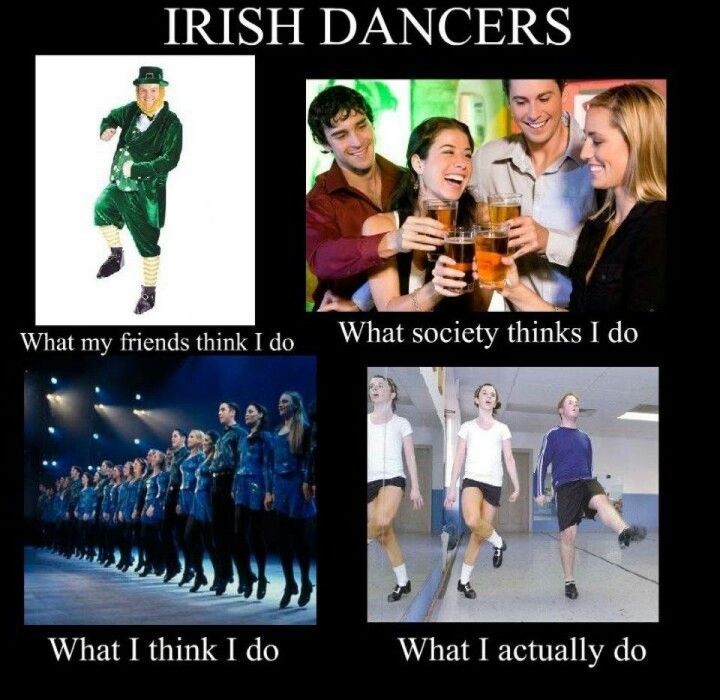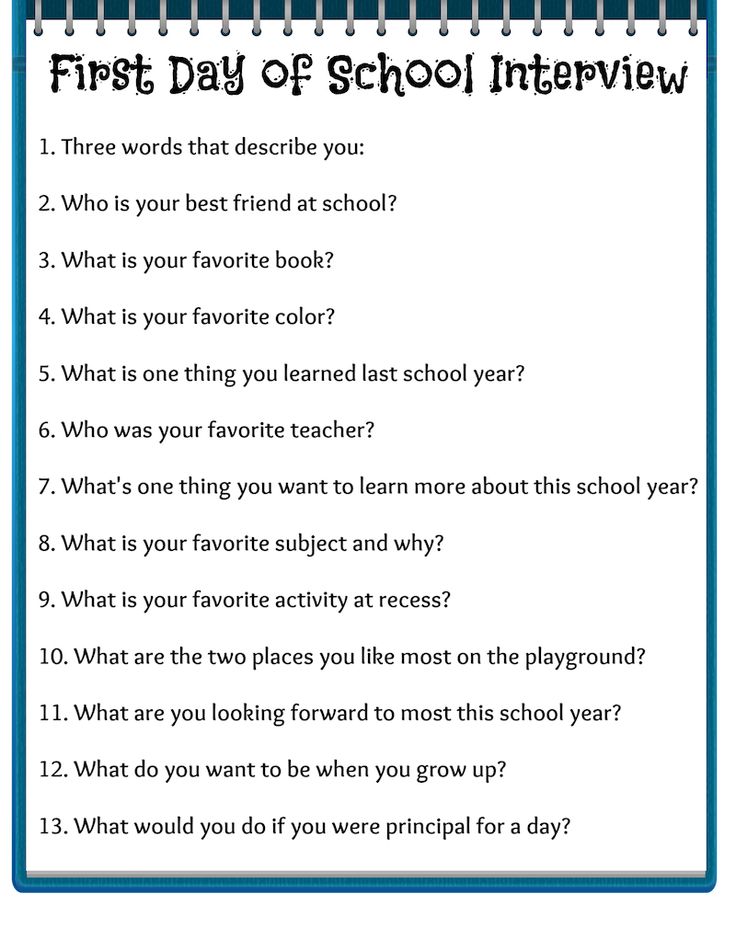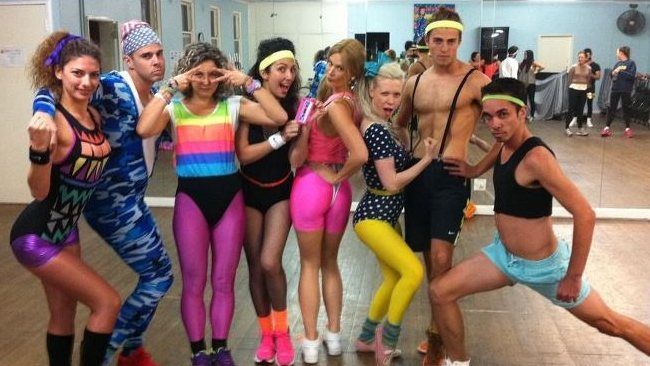How to flamenco dance
The Beginner's Guide to Flamenco
Flamenco is such a captivating art form and it enthralls and entices novices to begin a journey of learning it. So, they sign up for a class and then……
FREAK OUT! Why? Who knew flamenco was so complicated! There are the steps, then the footwork and the hand coordination and then that weird 12 count rhythm and all the different rhythms and, and, and….
It can be overwhelming for sure. Realize that flamenco isn’t like learning how to ride a bike. If you think of learning how to dance flamenco more like learning a new language, then it’s easier to digest the whole concept and just enjoy the journey.
But fear not, here is YOUR general guide to flamenco for beginners.
A SUPER BRIEF HISTORY OF FLAMENCO
Flamenco stems from hundreds of years of Andalusian (southern region of Spain) history that interplays with Andalusian, Moorish, Jewish and Gitano (Roma) cultures before and after the Reconquest of Spain (1492). But it is from the Gitanos’ anguished history that much of flamenco’s earliest most profound rhythms come from. In the beginning, the cante (singing) was the center of flamenco and stayed within family settings. By the late 18th century it began to venture into a performance environment and grew to the Golden Age of Flamenco in the late 19th century where the “cafe cantantes” flourished. This is where the dancer became the major attraction of the performances. Flamenco entered the theater in the late 19th and early 20th century where it was criticized for falling victim to commercialism.
FORMS OF FLAMENCO
At its core, flamenco consists of toque (guitar), cante (singing), and baile (dance). The music of flamenco is based on different palos (rhythms). Think of your favorite song and think of others doing covers of it or sampling it in variations. You could hear the chords of that song and immediately recognize it as your favorite song- quick, name that tune! That’s the same with flamenco.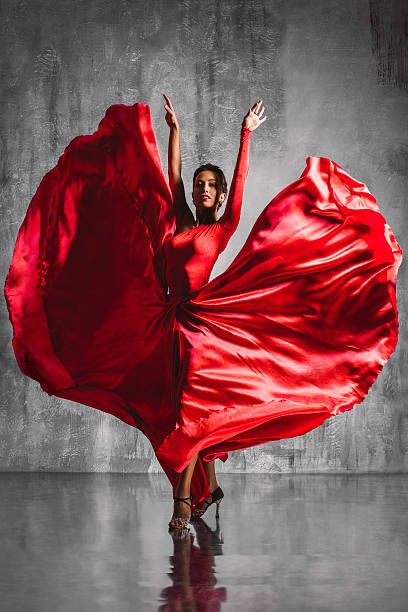 There are many rhythms like Alegrias, Guajiras, Tangos, Solea, Fandangos, Seguirilla, etc. They are all identifiable by their own tempo, feeling, melody and chords. Some are danced while others are only sung.
There are many rhythms like Alegrias, Guajiras, Tangos, Solea, Fandangos, Seguirilla, etc. They are all identifiable by their own tempo, feeling, melody and chords. Some are danced while others are only sung.
FLAMENCO TODAY
Although Flamenco is highly associated with Spain, it is still an Andalusian art form where it is still taught in homes through an oral tradition and occurs at informal gatherings called juergas. It is also taught formally in dance academies throughout Spain and has become a world wide phenomenon such that it has been declared a World Heritage Treasure by UNESCO in 2010. Flamenco aficionados from all over the world practice flamenco and flock to Spain every year for workshops and studies.
Generally, you’ll see flamenco in three forms- casera, tablao, teatro. Casera (home-style) means the kind of flamenco you’ll find at homes danced by non professionals at parties or juergas. This is where you’ll see grandma get up to do a little pata’a por bulerias at a wedding.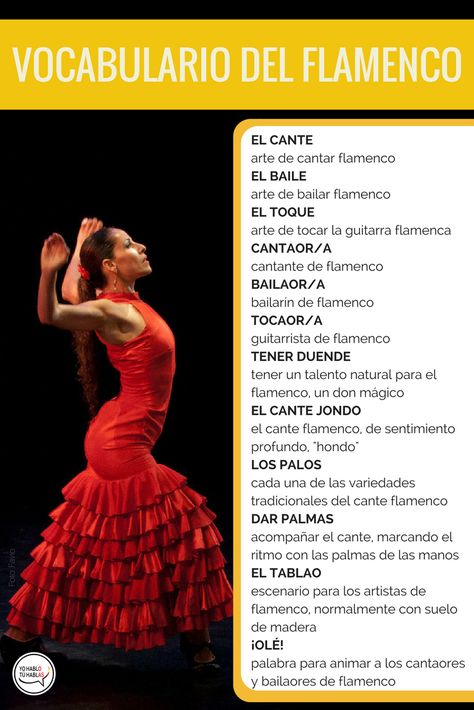 Then there’s tablao flamenco which is the type performed at the flamenco restaurants or clubs. These are small venues and tend to be improvised, although there may be some rehearsal for ongoing shows. Finally, teatro (theater) are the big flamenco productions that you see touring with company dancers, a choreographer and many musicians. Much thought is put into costuming, lighting, story and choreography.
Then there’s tablao flamenco which is the type performed at the flamenco restaurants or clubs. These are small venues and tend to be improvised, although there may be some rehearsal for ongoing shows. Finally, teatro (theater) are the big flamenco productions that you see touring with company dancers, a choreographer and many musicians. Much thought is put into costuming, lighting, story and choreography.
From there you could say there are two types of dance styles seen in tablao and theater and it’s from how the dancer learned to dance. Gitano style tends to be taught within a Gitano family home and is more raw and unrefined. Then the “rest” of flamenco styling tends to be quite broad but the general idea is that it’s learned in the dance studios and dancers may also train in other styles such as ballet. One isn’t better than the other, they just have different stylings.
COMPONENTS OF FLAMENCO FOR DANCERS
New beginners will most likely learn Tangos first, which is a fun and light hearted 4-count rhythm, then move on to one of the 12 count rhythms after several weeks.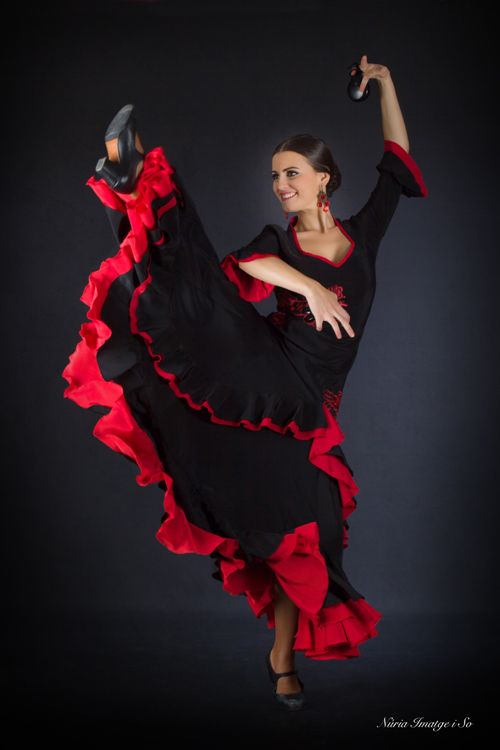 But what do they actually learn?
But what do they actually learn?
We start off with palmas, which is the hand clapping that goes along with keeping the rhythm. It’s important to be able to “hear” the rhythm and to keep time with the palmas. Then we move on to learning the hand movements that when done correctly look like beautiful fluttering birds. Then there’s marcaje which are the marking steps followed by pies (pronounced pee-yes, not the desserts) which is any of the rhythmical footwork that can be used as an accent or for a whole footwork sequence (escobilla).
Dancers learn all the various technique but we’re always learning the cante and the compás. We can’t dance without it.
In a live flamenco show, the dancer is in tune with the singer and the guitarist. They’re all playing off of each other just like a good jazz band when they’re improvising. If the dancer brings up the tempo, the musicians follow. If the guitarist plays a falseta, the dancer dances without footwork to let the guitarist shine.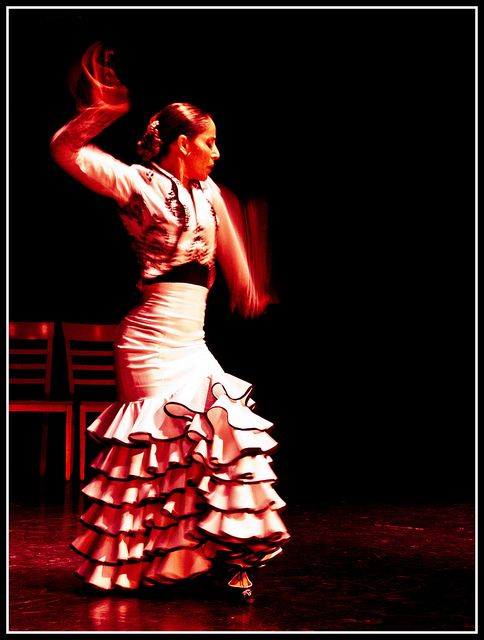 When the singer is singing, the dancer dances according the mood. It’s a conversation between all three elements.
When the singer is singing, the dancer dances according the mood. It’s a conversation between all three elements.
COMPAS
The most important element is the compás, which is the rhythm. In the United States, we teachers generally teach flamenco in Spanglish, speaking English while sprinkling flamenco terms in Spanish. For example I’ll say, “You’re dancing out of compás,” which means “You’re dancing out of rhythm. I will also say, “We’ll do this step for 4 compases and then transition.” In this case, compás means a measure- a count of 4 or a count of 12, depending on which palo (rhythm) we are dancing.
Now, compás is the one thing that can truly trip up a dancer. It’s important to be open to enveloping the compás to listen to it, to hear it, to feel the accents. Usually the 4 count rhythms are easier to dance to for American dancers because we’re accustomed to the count. However, it’s the 12 count that is most challenging, but it’s more prevalent in flamenco.
The 12 count rhythm generally starts on 12 and ends on 10 with the accents on 12, 3, 6, 8, 10. Whaaaaaat? Basically, the rhythm begins on the 12 count of the measure and then when it ends, it ends on 10.
12 – 1 – 2 – 3 – 4 – 5 – 6 – 7 – 8 – 9 – 10 – 11 – 12 – 1 – 2 – 3 – 4 – 5 – 6 – 7 – 8 – 9 – 10
This shows you two compases of 12, with the accents on 12, 3, 6, 8, 10 and then it ends on 10. Do you remember the musical West Side Story? The song “America” is in Buleria which is a 12 count rhythm.
12 – 1 – 2 – 3 – 4 – 5 – 6 – 7 – 8 – 9 – 10
I – like – to – BE – in – a – ME – RI – CA
LOL. It’s true!
HOW TO LEARN FLAMENCO
The only way to learn flamenco is to get out of your own way, meaning that we can over think things sometimes. Flamenco involves allowing yourself to open up, releasing while there still is a tension. Kind of like don’t over think when you’re simmering in your flamenco energy, getting ready to reach a boiling point! But the other obvious things are to show up to class, practice, listen to flamenco, and watch flamenco.
Flamenco involves allowing yourself to open up, releasing while there still is a tension. Kind of like don’t over think when you’re simmering in your flamenco energy, getting ready to reach a boiling point! But the other obvious things are to show up to class, practice, listen to flamenco, and watch flamenco.
Sounds like a lot, I know! But when you have the flamenco bug, all of it is a joy and feeds our passions (even when we’re frustrated at not understanding a particular piece of footwork!)
So, sign up for your local flamenco class or join my Online Flamenco Studio and enjoy the process. Show up, breathe and release. OLE!
Flamenco dance: the movement of arms
Flamenco dance: the movement of arms
In flamenco dance, the dancers interpret with the body what the sing transmits, lyrics that are usually loaded with feeling: from the deepest sorrows to moments full of contagious joy.
For this to reach the public, the dancers use their body to express all these emotions. The wiggle of the figure is accompanied by movements of smooth and elegant arms that contrast with ‘zapateado‘, sometimes very intense. On the flamenco tablao, the interpreter communicates with everything.
The wiggle of the figure is accompanied by movements of smooth and elegant arms that contrast with ‘zapateado‘, sometimes very intense. On the flamenco tablao, the interpreter communicates with everything.
The movement of the arms, hands and fingers gives grace and gives magic to the dance. It is also the element through which, together with the contoneo of the body, it is possible to reinforce that ‘communication of feelings’ that each flamenco style possesses, such as joy, sensuality, sadness or passion, among others.
These delicate and elegant movements become a true work of art when everything is in harmony in flamenco dance: movement of arms, hands, fingers and body.
When we go to a flamenco show, on the tablao this synchronization seems easy, but in reality it is not as simple as it seems. Getting the right technique requires a lot of effort and hours of work so that everything flows naturally. The good placement of the arms, the proper movement of the hands and fingers is essential so that the final result is the right one, that is to say, that not everything is valid in flamenco art.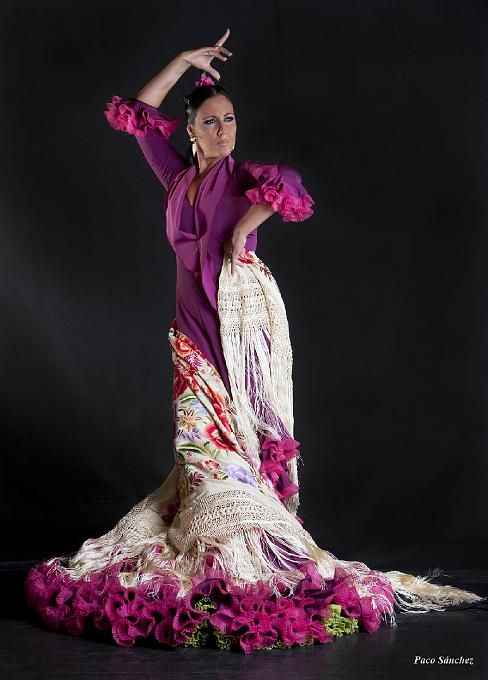
To perform a dance correctly, the interpreter has to know how to place and move the arms so that when you take them from one position to another, do so as naturally and beautifully as possible. For example, the hands of flamenco dancers must always be above the waist.
The twist of the wrist must be in both directions and know how to coordinate the arms with the rotation of the wrists. Although it may seem like a simple task, the essential thing is for artists to do all these movements at the same time in a natural way.
How the arms move in flamenco dance?
In relation to the movement of arms, the ‘floreo’ and the ‘braceo’ are essential to dance flamenco because they are used throughout the execution of the different flamenco styles that are interpreted, both in the movements from one side to another, as in the accompaniment of other movements of the body and, as we have indicated at the beginning, the ‘zapateado’.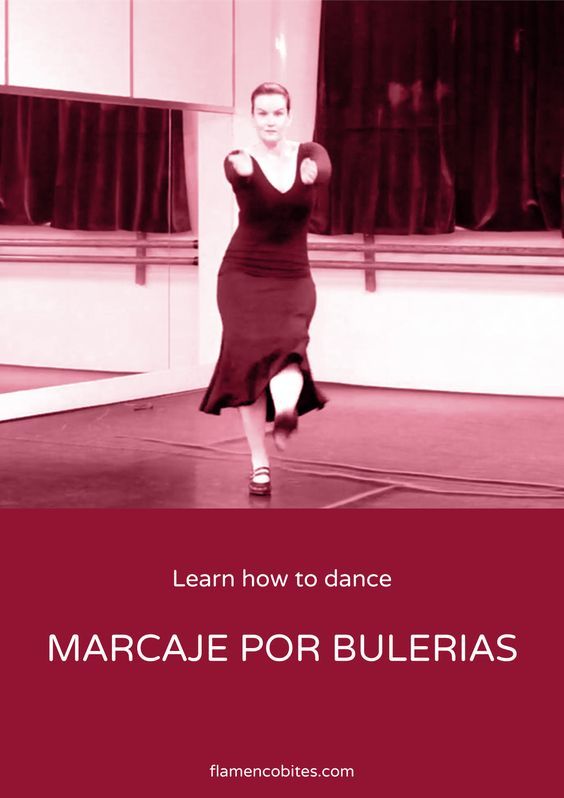
In the ‘braceo’ (arm movement), the most basic thing is to move the arms semicircularly, from top to bottom outside the torso, or also from bottom to top through the center of the torso. It is responsible for giving character to the interpretation, hence the position is very important, which plays a key role in the interpretation. The arm movement can be strong and dominant or fragile and delicate.
The ‘floreo’ is the movement of hands and fingers that consists of moving the arms and at the same time turning the wrists in a circular way, while the fingers open and close.
In the movement of the arms, hands and fingers, if you notice there is a slight difference between how the man and woman do it. The men dancers usually keep their fingers together, while the women perform movements from the little finger to the index, which gives a more beautiful appearance to the rotation.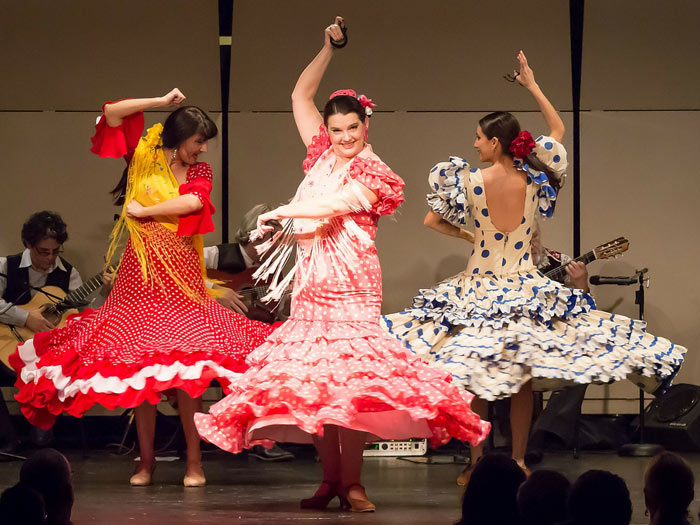
Traditional hand movements in flamenco dance
Flamenco music and dance are the fruit of centuries of influence and the fusion of multicultural elements, whose result seduces the whole world. Flamenco is an art that is characterized by accommodating the artist’s personal improvisation.
In the case of dance, the spontaneous expressions of the dancers during their performance, grant them a special nuance that enrich the final result. The way in which the arms, hands or fingers are moved are also personal hallmarks that characterize the execution of many artists.
Remember that flamenco dancing is manifested in more than fifty different styles, depending on the emotional criterion or its origin, among other elements. That is to say, the artist must respect the structure and elements of each suit he plays, but by adding his personal stamp, he differentiates his flamenco interpretation from another.
Flamenco is a very visual art, hence the dancers also speak with their hands. They sound and sing with palms and clicks when they are happy or they are also used to transmit passion, lament, delicacy, elegance or pain, depending on the type of movement the performer performs with them.
They sound and sing with palms and clicks when they are happy or they are also used to transmit passion, lament, delicacy, elegance or pain, depending on the type of movement the performer performs with them.
Throughout the history of flamenco dancing, many hand movements, performed by great dancers and bailaores, have remained as traditional for this art, such as:
- The fact of not taking off the fingers for men.
- The detachment only two fingers, the index and the heart, in the case of men, but this movement was also very typical of the dancer Pastora Imperio, who used them with a hand turn down and inside.
- Forming a circle with the fingers heart and thumb for women, or making conches or ringlets.
- Other forms that are also very typical and traditional in the movement of the hands is taking handfuls, calling someone, with an open hand as a farewell or completely tense as a gesture.
As we can see the movement of the arms, hands and fingers are fundamental elements for flamenco dance.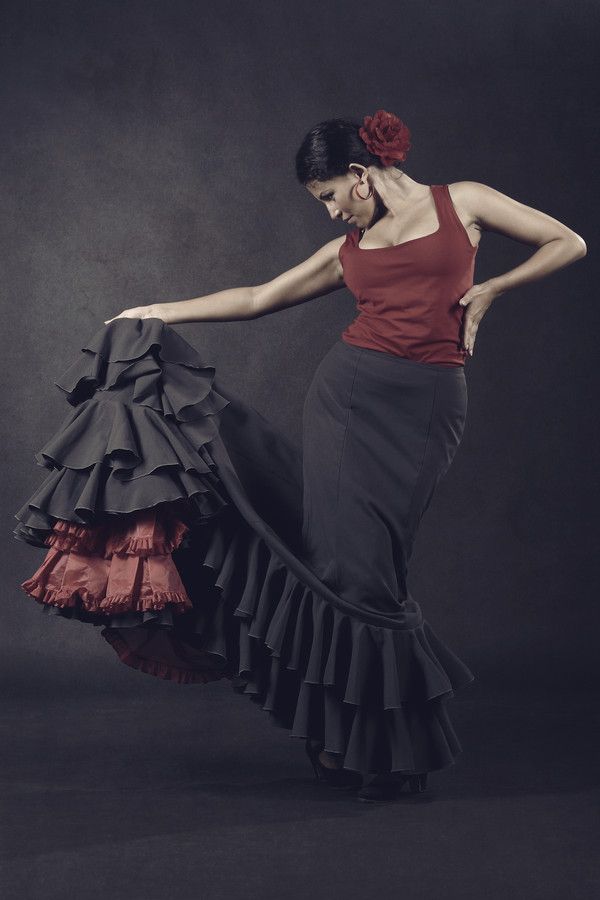 Enjoying a live performance is undoubtedly one of the most recommended experiences to appreciate the grace and elegance that artists transmit with these movements. If you visit Seville, our recommendation is that you visit our tablao flamenco and do not miss the flamenco show that we celebrate every day at El Palacio Andaluz.
Enjoying a live performance is undoubtedly one of the most recommended experiences to appreciate the grace and elegance that artists transmit with these movements. If you visit Seville, our recommendation is that you visit our tablao flamenco and do not miss the flamenco show that we celebrate every day at El Palacio Andaluz.
flamenco, flamenco dance, flamenco seville, flamenco styles, movement of arms
Recommended Posts
Flamenco referents in Seville
The cantiñas, characteristic flamenco singings of Cádiz
The flamenco long-tailed dress
How to learn to dance flamenco? | Culture
What is flamenco? Look at the figures of the dancers, listen to the rhythms, to the click of heels. Do you see, feel, understand? This is an emotion dance... An improvisation dance... A challenge dance... A challenge to fate.
It originated on the basis of Spanish folklore, and its roots are in Moorish, Gypsy, partly Jewish and Italian cultures.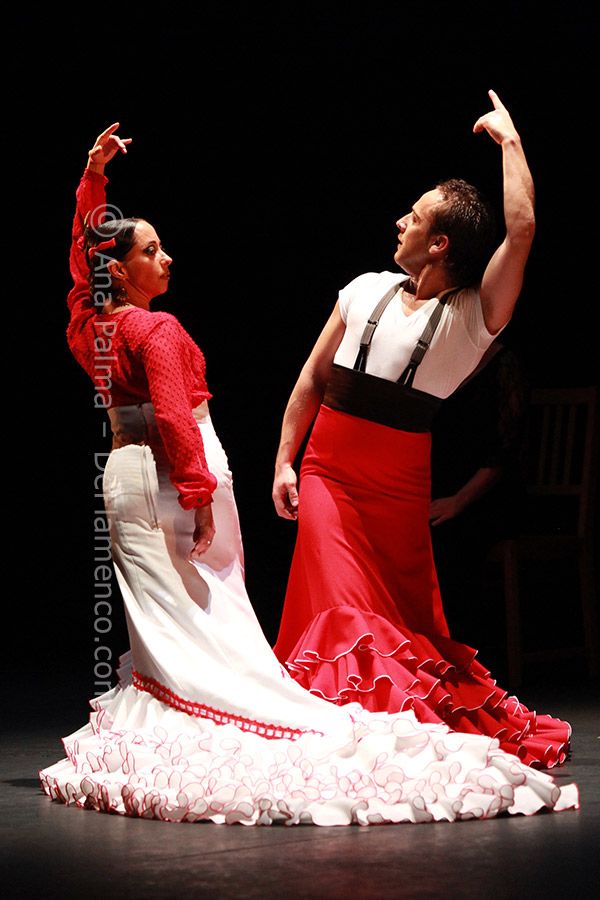 Flamenco is the quintessence of music, dances, songs of those whom society considered an "undesirable element", an emigrant, an outcast. These people had to look for themselves, somehow assert themselves - and they poured out their feelings, pain and hope in music, song, dance. Flamenco is a multifaceted dance.
Flamenco is the quintessence of music, dances, songs of those whom society considered an "undesirable element", an emigrant, an outcast. These people had to look for themselves, somehow assert themselves - and they poured out their feelings, pain and hope in music, song, dance. Flamenco is a multifaceted dance.
Multifaceted, like life itself. There is a place for both laughter and crying. This is a tragic dance. The dancer dances as if death itself is holding him by the shoulder. It's so Spanish... The singer Pastora Pavón once said: “When I sing flamenco correctly, I taste blood in my mouth. At this moment, the presence of fate, fate is acutely felt. And there is one spectator - God, not even a spectator in the hall. When you're really dancing flamenco, you're thinking. And you plunge into the rhythm, into yourself, not for show. This state is called duende - as if "black demon of inspiration" .
Several characters participate in the dance: a dancer, a guitarist, a singer, a palmero — he claps, beats out the rhythm, and not necessarily with his hands, any object is suitable for this. Any of them can start the dance, as if setting their own theme, which then begins to acquire details and vary. The melody, tempo, rhythm can change, obeying certain signs: the dancer either knocks out a certain fraction or puts his hands in a certain way, demanding that the pace be accelerated.
And everyone takes turns dancing, singing or playing their own. Just in sequence. If the dancer takes on a solo at some point, then the musician can play along with him, but he himself will remain in the background. It turns out a kind of cycle of monologues of all participants in the dance.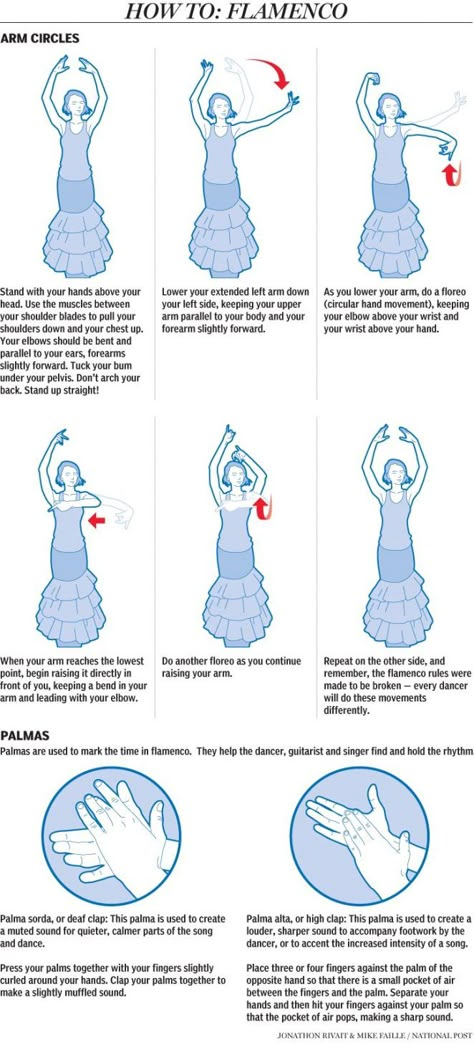 And the coda - the flamenco finale - is common to everyone.
And the coda - the flamenco finale - is common to everyone.
Women who dance flamenco are water and fire. Spanish women learn their national dance not only to perform on stage. For many, this is a means of self-expression, self-development - flamenco is a very smart dance, here you cannot do with a set of memorized movements: everything must come from the heart, from the heart. Here you can not dissemble and fake. A flamenco dancing woman declares herself: “Who am I? Look at me, that's what I am - all in front of you.
Everyone can learn how to dance flamenco. In Spain there are dance schools open to everyone. It doesn’t matter how old you are, 6 or 60, it doesn’t matter what figure or appearance you have - women who dance flamenco know how to be beautiful and emphasize this a hundred times in music and movement.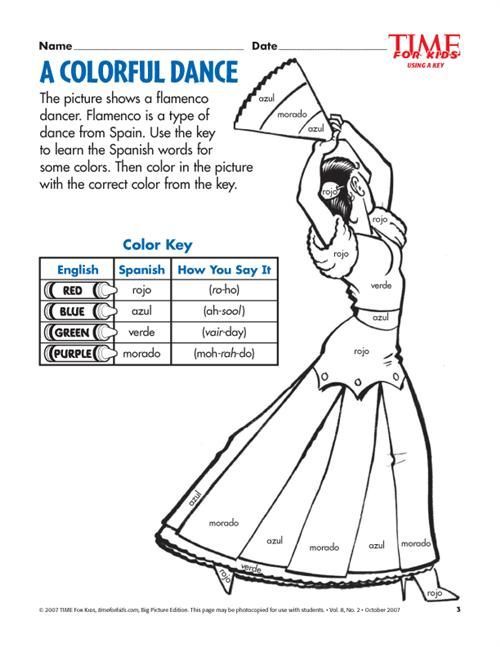
A good flamenco teacher first of all makes his student love herself. She should consider herself beautiful and be proud of it. After all, the main pose in flamenco dance is a pose of complete contentment with oneself. Then the development of feminine gestures, steps, turns begins. The student should feel like a queen and convey her admiration for herself to the public.
Of course, many beginners have complexes, insecurity, enslavement — these barriers must be overcome. And gradually understanding will come: if a woman is beautiful internally, she is beautiful externally, and this beauty must be shared with people. And if she has something to think about, then she has something to dance about, to convey to others her mood, her feelings, her perception of life.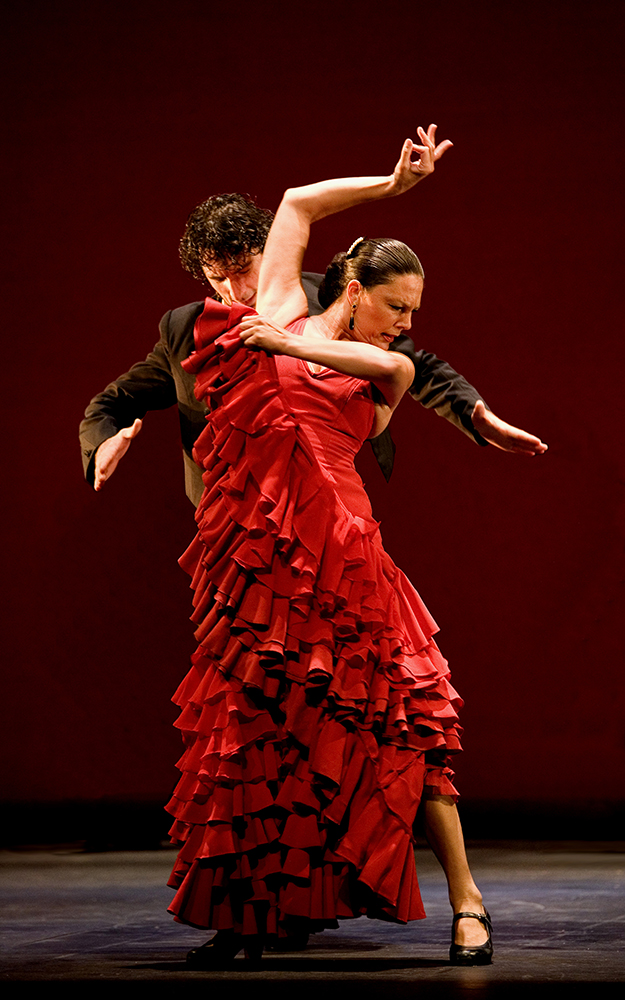
A woman who dances flamenco must show the viewer that she is self-sufficient, that she has a lot of energy. And she shares this energy with those who look at her. But if at the same time she dances in such a way that it resembles a monologue: “Oh, excuse me, I’m dancing in amateur performances, but in fact I’m not like that, but I go to the library ...” Now this is not flamenco, but a parody.
In Spanish flamenco schools, the standard course of study is 10 lessons, 2 times a week, just over a month. This is the base, entry level. And then like a marathon - who wants as much as they want: six months, a year, several years. Mostly stay for a long time. As they say, indefinitely. Flamenco is like life: the more experience, the more expressive the dance, the stronger the contact with the audience.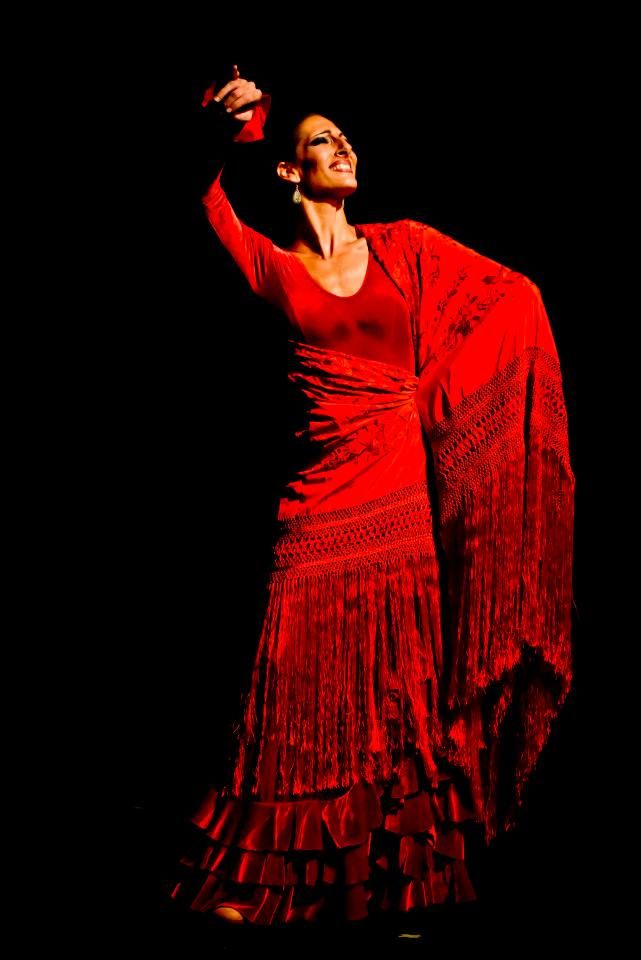
And if in the hustle and bustle of everyday life you come across an announcement: “Admission to the flamenco dance school is announced” - do not pass by! Go there, take lessons, and life will open up to you in a completely different dimension. You will feel a woman in yourself - strong-willed, unbending under the blows of fate, mysterious and desirable. Flamenco will teach you how to be beautiful forever!
Tags: Spain, art, hobby, dancing, culture, dancer
Flamenco dance (Types of modern dances)
Flamenco Flamenco - Spanish dance of passion!
The origins of flamenco can be found in Mauritanian musical culture.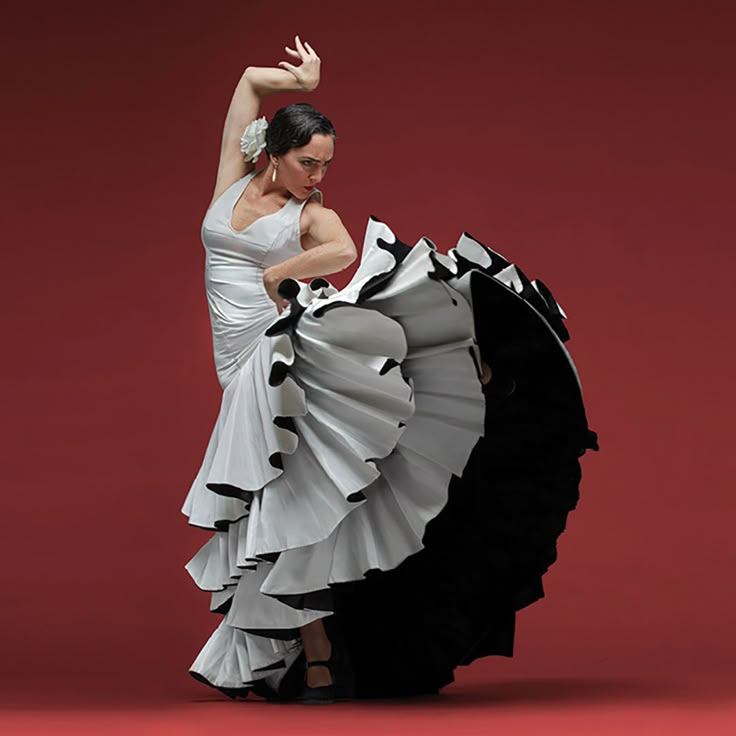 Gypsy music also significantly influenced this style - many consider the Spanish gypsies to be the main, true carriers of the style.
Gypsy music also significantly influenced this style - many consider the Spanish gypsies to be the main, true carriers of the style.
Flamenco
What lies behind the sonorous and alluring word "flamenco", inextricably linked with distant passionate Spain?
Origin
In the 15th century, gypsies arrived in Spain from the crumbling Byzantium and settled along the southern coast of the country in the province of Andalusia; according to their custom, they began to adopt and rethink local musical traditions, such as Moorish, Jewish and Spanish proper; and from this fusion of musical traditions, rethought first by the gypsies and then by the Spaniards, flamenco was born.
For a long time flamenco was considered a "closed art", as the gypsies lived as an isolated group; flamenco was formed in narrow circles. But at the end of the 18th century, the persecution of the gypsies stopped, and flamenco came to the stage of taverns and cantante cafes, gained freedom.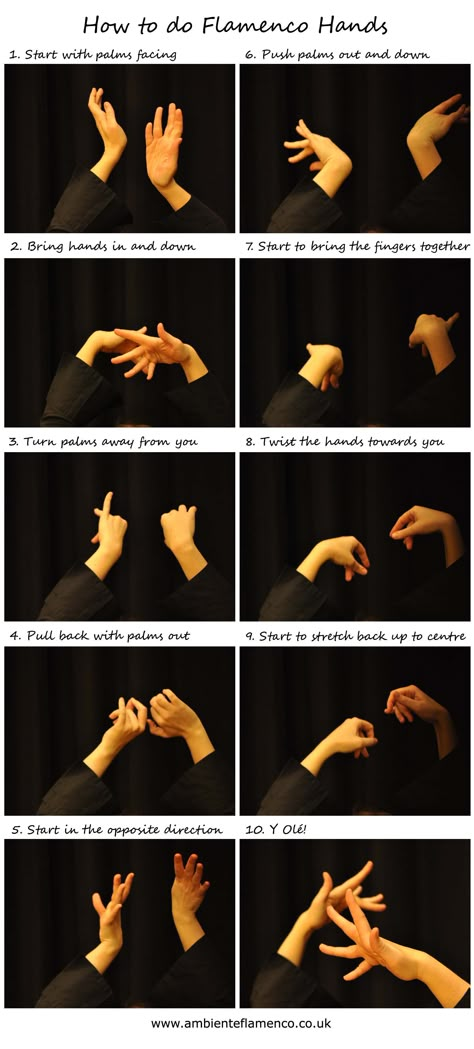
At the end of the 20th century, flamenco began to absorb Cuban melodies and jazz motifs; and, in addition, elements of classical ballet acquired their permanent place there.
The most famous flamenco dancer Joaquin Cortes, who updated the concept of flamenco dance, got rid of it from the "canonical standard" and introduced a new lively stream and expressiveness into it.
It's more than just a dance, more than music or singing - it's a unique combination that turns flamenco into a real extravaganza. It is her that we so often lack in a measured life, where schedules rule the ball in half with constant stress.
The desire to fight the routine, multiplied by the interest in Spain and its culture, is pushing more and more people to study flamenco dance and all its subtleties - fortunately, now there are no obstacles for this.
Flamenco dance is a very special combination of Moroccan, Spanish and Gypsy motifs, and a huge part of its charm is also the skill of the singer and guitarist, which invariably accompanies any performance.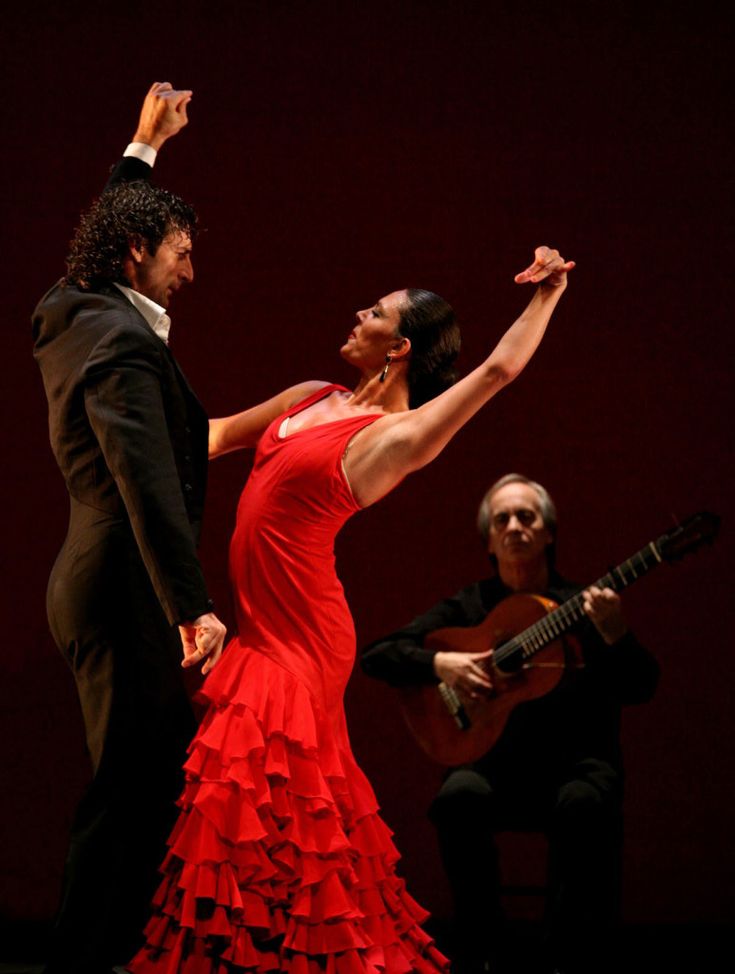 Although the main musical element is the guitar, drums are also important, the role of which is played by castanets, cajon, and sometimes just clapping.
Although the main musical element is the guitar, drums are also important, the role of which is played by castanets, cajon, and sometimes just clapping.
In many ways, flamenco is the art of improvisation , a dance that cannot simply be memorized, and a melody that cannot simply be memorized. This is partly why it has more than 50 varieties and continues to develop: on the basis of flamenco dance, other, modern directions appear. Flamenco festivals are very famous - especially, of course, Spanish ones - a whole world of colors, music and incredible beauty.
Characteristics and attributes.
Despite the fact that men also dance flamenco, it is known primarily for its dancers - a woman performing flamenco is one of the most common motifs in painting, especially Spanish. And who does not remember the charming image of a graceful woman in a red dress, performing complex pas? Flamenco dance is well remembered due to its bright and unusual attributes.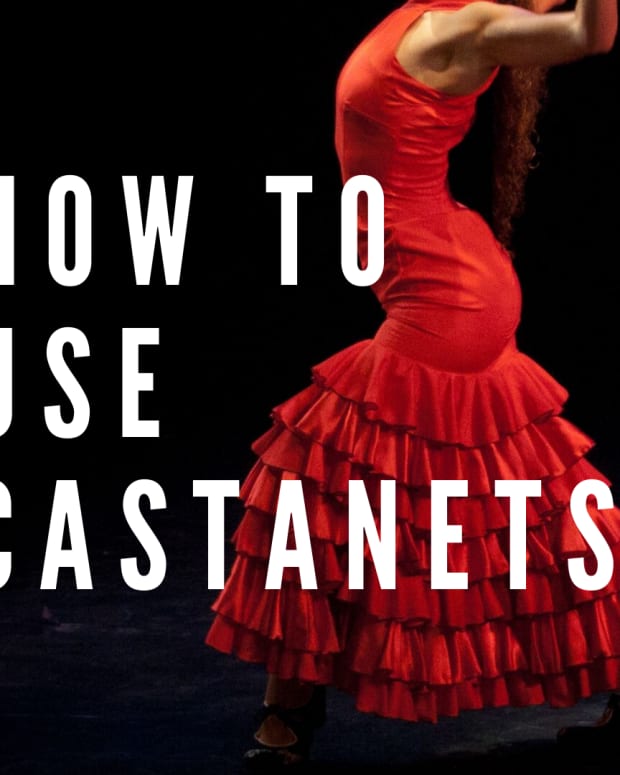
One of the most memorable is a long dress (most often red, less often black, although other colors are acceptable) with frills and a wide shawl. A fan is also often used; whatever the dancer has in her hands, she includes everything in the performance, makes it a part of it.
Men wear wide black trousers , shirt with short sleeves (usually white) and wide belt , sometimes a vest is added to this outfit. Shoes, both male and female, are always with a small heel, the knock of which on the floor is a kind of musical accompaniment. However, until the 19th century, gypsies performed the flamenco dance barefoot, but now this practice is a thing of the past.
Flamenco is certainly not the first option that comes to mind when thinking about dancing. Nevertheless, it is worth considering.
Flamenco dance is a unique opportunity to realize yourself, touch the intriguing culture of Spain, acquire an exciting and unusual hobby.